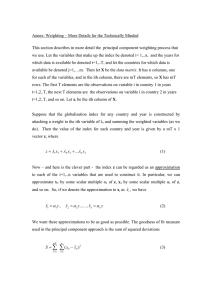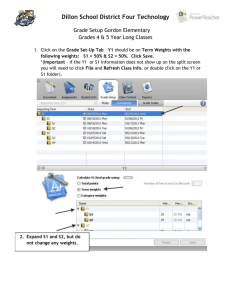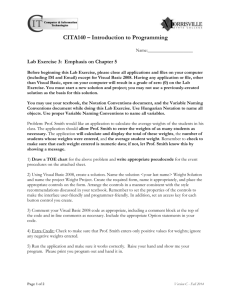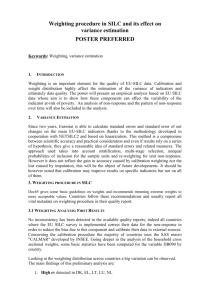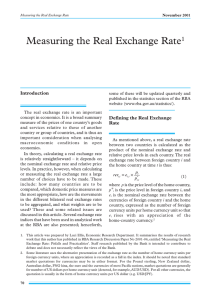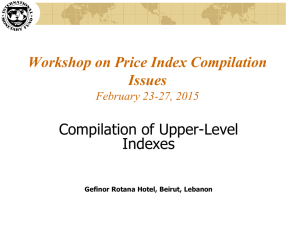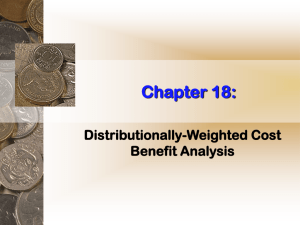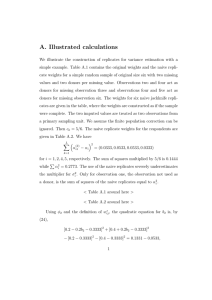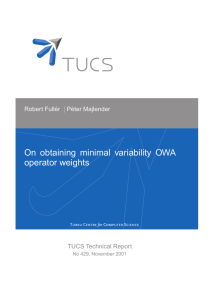Difficulties in the Estimation and Quality Assessment of Service
advertisement
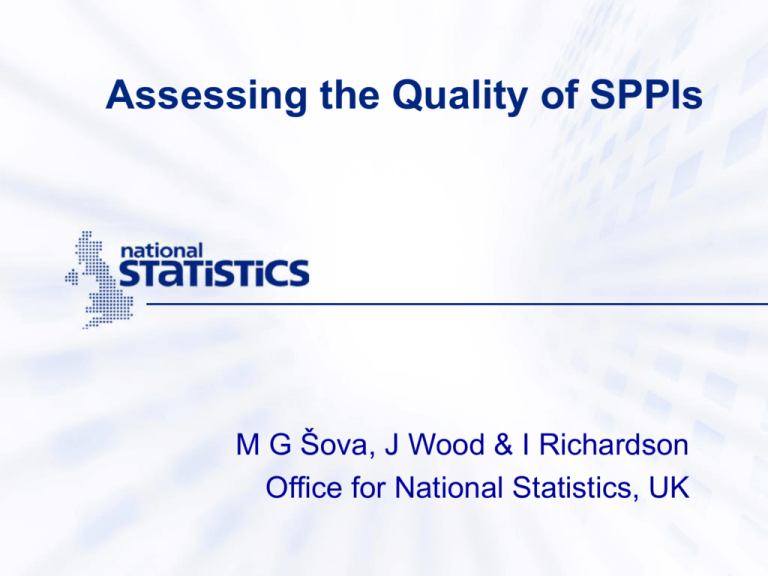
Assessing the Quality of SPPIs M G Šova, J Wood & I Richardson Office for National Statistics, UK Overview • What are SPPIs? • Quality Assessment of ONS SPPIs – Products – Business versus retail – Sampling – Weighting • Non-standard estimation methods • Other aspects • Plans to improve and monitor quality What are Services Producer Price Indices? Price movements in business-to-business services In UK: – Quarterly Laspeyres price index – Rebased every 5 years – Uses: • Estimating corporate services inflation • Deflators for Index of Services – Users: • National Accounts • Bank of England • Eurostat Quality Assessment of ONS SPPIs • In 2006 by Dr Markus Šova – Replaced planned three-year programme • 29 Product Classes – 198 Product Categories • 134 recommendations Quality Assessment of ONS SPPIs • Product descriptions often vague • Dubious sample allocations between categories • Weights – Some excessively large (potentially disclosive) – Some excessively small – Derivation and rationale not always clear – Weighting for purposively selected respondents problematic • Coverage incomplete • Definition of ‘Europe’ ill-defined • Some uses of external indices problematic • Processing risks (manual transcription, spreadsheets) Products - Classification • CPA 2008 : 124 pages – Agriculture & construction: 12 pages – Production: 72 pages – Wholesale & retail: 9 pages – Other services: 31 pages • In-house service product classification Product Definitions • Need consistent product definitions over time • Not always possible (e.g. Market Research) • Not always possible to define the product (e.g. canteen services) • Possible Solutions: – standard services – quality adjustment – hedonic modelling – model contracts – hourly rates – unit value prices Business versus Retail • Intermediate consumption v. final consumption (Supply-Use Tables) • Differentiation not always possible (e.g. rail fares) • Possible solution: – Product differentiation and differential weighting (e.g. by destination, travel time, ticket class) – Data not always available Sampling • ProdCom (sample size: 22,000) • Ad hoc SPPI turnover surveys in 2000 and 2005 – Sample size: 5,000 (SPPI sample size: 4,500) – Limited scope and coverage • Purposive selection of respondents – Amended method for estimating unit weights • Sample (mis)allocation Weighting • Large, small weights • Product class weights – Category definitions – Uncertain and dubious derivation – Limited coverage – Supply-Use Tables (2005 rebasing) • Unit weights – Purposive selection of respondents and products – Probability proportional to size sampling? – Consistency versus unbiasedness? Non-Standard Estimation Methods • Model contracts (e.g. computer programming) • Hourly rates (e.g. legal services) • Unit values (e.g. telecommunications) – cheap and easy – potential bias (but no variance) – quality adjustment Other Aspects • Percentage fees (e.g. employment agencies) – Dependence on related index • Use of external indices – Quality assurance • Annual chain-linking • Scope and coverage – ProdCom for services? All products? • Cost • Timeliness Plans to Improve and Monitor Quality • Implement QA review recommendations – Re-specify vague item descriptions – Reduce processing risks • Re-allocate sample – Standard errors – Re-categorisation – 2000 weights versus 2005 weights • Monitor unit value indices • Periodically repeat quality assessment • Resource constraints
